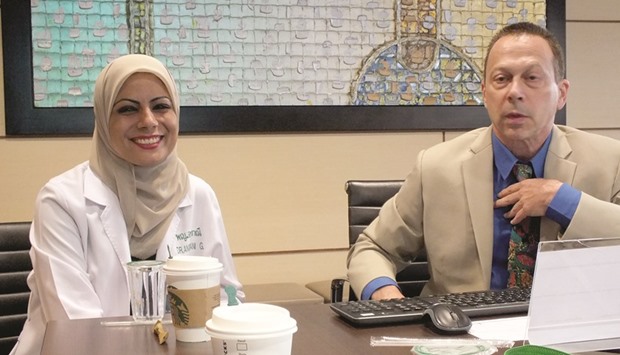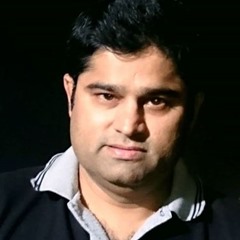In recent years, tourists have flocked in their thousands for reasons other than partaking merely the enthralling Thai night life. In particular, Muslim tourists find an immediate appeal in its growing “Islamic tourism” potential, with halal hotels, food and the opportunity to see the lifestyle of Thai Muslims. The other eyeball grabber is medical tourism, where one hospital particularly offers a fascinating insight.
Bumrungrad International Hospital
Cliched as it sounds, the name says it all. Pronounced bahm-roon-RAHT — meaning “care for the people” in Thai — Bumrungrad is a virtual one-stop medical facility that attracts you immediately for its calm un-hospital like ambience. In fact, I’m prompted to ask the flawless fact-reeling PR guide, the secret of its lack of hospital smell; she tells me it is a regular drill with helpful chemicals to keep the odour at bay.
Hospitals of the world, take note!
An engaging session with the director, marketing officials, doctors and nurses leaves one with plentiful adjectives for what makes the Stock Exchange-listed Bumrungrad one of the best in the business. Since medical tourism has taken on a new sheen, it is just as well.
To cut to the chase, the 21-storied 580-bed Bumrungrad with 55 specialty centres, 19 operating theatres, internationally certified lab and pharmacy, clinical research centres, advanced imaging facilities and automated labs onsite is the largest private medical facility in Southeast Asia.
Also with one of the world’s largest private sector outpatient clinics, Bumrungrad has long enjoyed the coveted US-based Joint Commission International accreditation, the first in Asia, in 2002.
Talking of medical tourism, Bumrungrad was also the first to receive Award for Excellence in healthcare tourism category in 2008; the first to grab “Thailand’s Most Innovative Company” award in 2008; and take the top position for “Best Website for International Medical Travel” at the 2008 Consumer Health World Awards, USA among a slew of similar distinctions.
If figures alone tell the whole story, which would not do much justice to be honest, it is pretty imposing. With 1,400 physicians, over 1,000 nurses and an American-led international management team that oversees 4,800 employees, Bumrungrad treats over 1.1 million patients every year, including both outpatient and inpatient. Of these, nearly half are international patients from more than 190 countries.
In 2015, it saw the second highest number of patients from the Middle East region (144,772), including more than 15,000 out-patient visits from Qatar, after Southeast Asia. The year-to-date (June 2016) figure is over 7,600 visits.
When asked about the specialties Qatari patients seek, Duangrudee Somboonruangsri, Manager, International Marketing, points to five areas, namely; (a)preventive medicine, (b)gastroenterology and hepatology, (c)obstetrics and gynaecology, (d)general surgery and (e)cardiology.
Overall, patients coming from the Gulf mostly seek treatment for cancer, spine surgery, robotic joint replacement, cataract surgery as well as paediatrics and neurology.
Bumrungrad also made news for successfully treating Middle East Respiratory Syndrome (Mers) patients from Oman in the last two years despite their advanced age (both in their 70s).
Interestingly, a large number of Americans themselves come here for treatment “because it costs 70-80% cheaper”, according to Sudi Narasimhan, Corporate Director of Marketing and Business Development. Overall, he says, it costs a third of what it would in the rest of the world. He also claims that the large turnover is thanks to Bumrungrad’s success rate of treatment being “twice as good as other US hospitals for JCI-accredited disease specific specialties”.
Asked if it is the most expensive option in Thailand given its stature, Narasimhan says, “Actually, there are five hospitals which are costlier in Thailand itself!”
It has Referral Offices in several countries, including Qatar (Souq Waqif, Doha). In recent years, the influx is notable and what drives the patients, especially those coming from the Gulf is confidentiality. The patients are called out by codes than name.
To facilitate patients who may have language issues, there are 150 interpreters, international/airport concierge service, embassy assistance and visa extension counter. For Muslim patients, there are prayer rooms and halal food on offer.
What’s endearing to see are the specially made out paediatric facilities. The PR guide tells me it is configured in a way as to distract the kids from any fear of medical procedure with even the nurses wearing colourful uniforms with cartoon characters. It almost seems like an indoor playground!

DISTINGUISHED: Dr Erik Fleischman, an American physician who has worked with infectious diseases in over 20 countries throughout Asia, Africa, the Americas and Eastern Europe and is the Assistant Medical Director-International at Bumrungrad, during an interactive session, with an Iraqi co-ordinator by his side. Photo by the author

